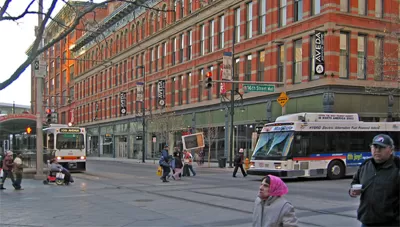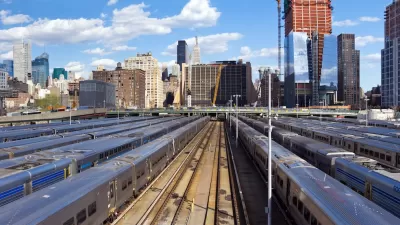Mobility Lab tackles the challenges of building affordable housing near transit (i.e., transit-oriented affordable housing) by providing specific, real-world examples from cities and states.

Michael Ryan argues for a stronger connection between affordable housing and transit:
The term “affordable housing finance” isn’t quite as catchy as “carshare,” “bikeshare,” or any of the other technology improvements helping promote transportation demand management. Yet for low-income members of our communities, who stand to benefit the most from those solutions, affordable housing finance should be considered, and put to use as, a TDM strategy.
After listing a few of the ways that transit reduces the daily costs of mobility for residents, Ryan also notes some of the challenges to building more affordable housing near transit. For one, land values near transit tend to be higher, according to Ryan, "[making] it difficult for affordable housing developers to purchase land in these locations."
Ryan concludes by producing a list of policy ideas designed to help deliver transit-oriented affordable housing. Examples include
- The allocation of Low-Income Housing Tax Credits through the Qualified Allocation Plans created by states for the U.S. Department of Urban Housing and Development. "Massachusetts is one of several states that have incorporated mobility into their QAPs by awarding points based on a project’s proximity to rail or bus," according to Ryan.
- Housing protection districts, such as the Special Affordable Housing Protection District included in the General Land Use Plan of Arlington, Virginia.
- A transit-oriented development fund, such as the Denver Regional Transit-Oriented Development Fund.
FULL STORY: Affordable housing and transit should go hand-in-hand

Alabama: Trump Terminates Settlements for Black Communities Harmed By Raw Sewage
Trump deemed the landmark civil rights agreement “illegal DEI and environmental justice policy.”

Planetizen Federal Action Tracker
A weekly monitor of how Trump’s orders and actions are impacting planners and planning in America.

Why Should We Subsidize Public Transportation?
Many public transit agencies face financial stress due to rising costs, declining fare revenue, and declining subsidies. Transit advocates must provide a strong business case for increasing public transit funding.

Understanding Road Diets
An explainer from Momentum highlights the advantages of reducing vehicle lanes in favor of more bike, transit, and pedestrian infrastructure.

New California Law Regulates Warehouse Pollution
A new law tightens building and emissions regulations for large distribution warehouses to mitigate air pollution and traffic in surrounding communities.

Phoenix Announces Opening Date for Light Rail Extension
The South Central extension will connect South Phoenix to downtown and other major hubs starting on June 7.
Urban Design for Planners 1: Software Tools
This six-course series explores essential urban design concepts using open source software and equips planners with the tools they need to participate fully in the urban design process.
Planning for Universal Design
Learn the tools for implementing Universal Design in planning regulations.
Caltrans
Smith Gee Studio
Institute for Housing and Urban Development Studies (IHS)
City of Grandview
Harvard GSD Executive Education
Toledo-Lucas County Plan Commissions
Salt Lake City
NYU Wagner Graduate School of Public Service





























